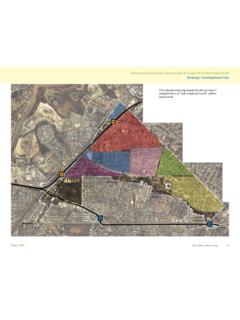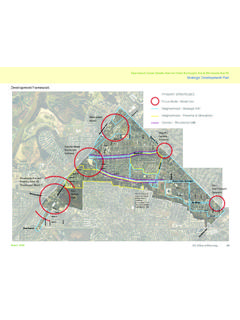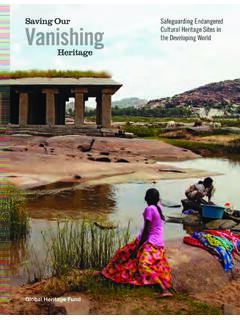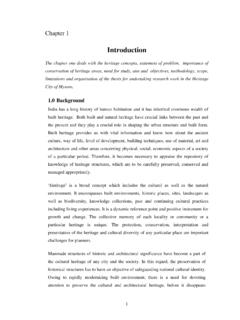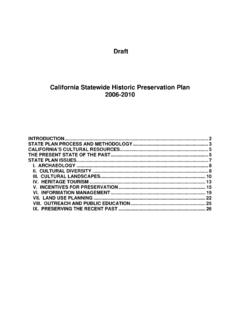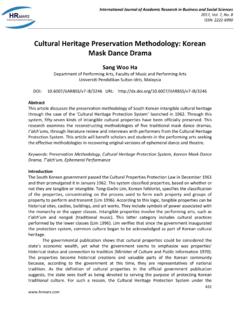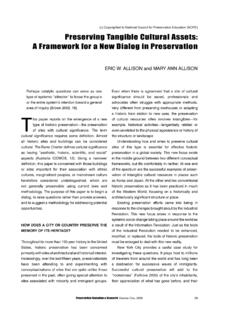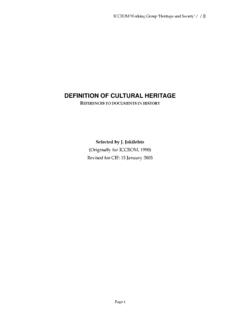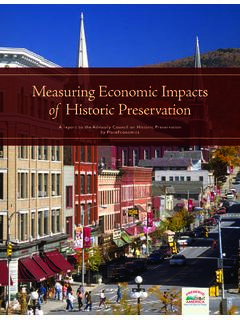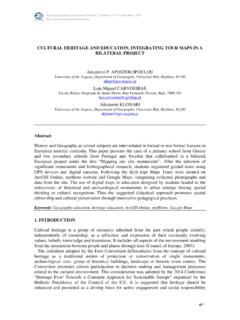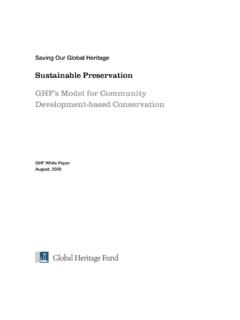Transcription of Preserving Communities and Character
1 The Historic preservation Plan for the District of Columbia 2008-2012 Preserving Communities and CharacterPreserving Preserving Communities Communities and Characterand CharacterThe Historic preservation PlanThe Historic preservation Planfor thefor theDistrict of ColumbiaDistrict of Columbia2008-20122008-2012adrian m. fentyadrian m. fentyMayorMayorHarriet TregoningHarriet Tregoningdirector, offi ce of Planningdirector, offi ce of PlanningTersh BoasbergTersh Boasbergchair, Historic preservation review Boardchair, Historic preservation review Boarddavid maloneydavid maloneyState Historic preservation offi cerState Historic preservation offi cerHistoric preservation OfficeHistoric preservation OfficeDC Office of PlanningDC Office of Planning200820081 Preserving Communities and CharacterThe Historic preservation Plan for the District of Columbia 2008-2012 IntroductIon 1 The District of Columbia s Historic preservation Program 2An Overview of the District s Historic Resources 3 preservation Issues and Challenges 9 GoAL 1.
2 IdEntIFY And rEcoGnIZE HIStorIc rESourcES 11 Define Historic Significance 12 Identify Potential Historic Properties 13 Designate Historic Landmarks and Districts 14 GoAL 2: ProtEct HIStorIc rESourcES 15 Improve and Integrate preservation Planning 16 Protect the Unique Historic Plan of Washington 16 Ensure Compatibility Between New and Old 17 Protect Historic Landscapes and Open Space 19 Protect and Improve Understanding of Archaeological Resources 20 Improve Enforcement Efforts 21 GoAL 3: cAPItALIZE on HIStorIc rESourcES 23 Improve Government Leadership 23 Create preservation Incentives 24 Integrate preservation with Economic Development and Sustainability Goals 24 Encourage and Support preservation Advocacy and Partnerships 25A cALL to ActIon 26 PLAn methodology 27 BIBLIoGrAPHY 30 TThe historic preservation movement in the United States is unique in the world.
3 Its successes and traditions have been founded at the grass roots level and have fostered a fundamental change in the way citizens, architects, planners, developers, and government officials view our neighborhoods and cultural heritage . preservation continues to thrive and build its momentum from the volunteers and non-profit leadership of national and local organizations. Traditionally, preservation has been and must continue to be inclusive of community, political, and professional leaders and volunteers. Without volunteers and local leadership, preservation will not continue the successes of the past or broaden its appeal and attract the participation of new involved and get others involved.
4 DC Historic preservation Plan 2008-2012 T2 Preserving Communities and Character identifies the strategic and comprehensive preservation goals for the city over the next five preservation plan outlines the specific policies and goals necessary to identify, protect, and capitalize on the District s historic re-sources, while establishing the framework for implementation and integration of the city s preservation activities. The plan is intended to be used by the Historic preservation Office, federal and District agencies, com-munity development corporations, property owners, community organizations, preserva-tion advocates, and others to guide decisions for the utilization and distribution of preserva-tion resources, surveys and documentation efforts, public outreach programming, and the stewardship, reuse, and promotion of our city s heritage .
5 This five-year plan was developed simultaneously with the update of the city s Comprehensive Plan, taking advantage of the two-year public participation process that went into the prepara-tion of that document. The updated Historic preservation Element of the Comprehensive Plan identifies three primary goals for historic preservation activities, which provide the guidance and structure for this plan as well. These goals reflect the more traditional purposes of pres-ervation, such as identification and protection of historic resources, while also recognizing the more active role that preservation can play in economic development, community sustainabil-ity and quality of life three goals of Preserving Communities and Character are to: 1.
6 Identify and Recognize Historic Resources2. Protect Historic Resources3. Capitalize on Historic ResourcesIn the following document, broad strategies and more specific actions for achieving these goals are identified, capturing the needs and desires of a wide range of preservation interests from around the city. 1 Preserving Communities and Characterand non-profit education and advocacy groups, are the critical grassroots of the city s preservation ef-forts. Organizations such as the DC preservation League, the Committee of 100 on the Federal City, and the Historic Districts Coalition are city-wide in their focus, working to lobby, educate, advocate, and promote the preservation and appropriate reuse of historic resources throughout the District.
7 At the neighborhood level, the city is extraordinarily well represented by dozens of community-based orga-nizations, made up entirely of citizen volunteers, for which historic preservation and the protection of neighborhood Character are primary concerns. District and federal agencies, the owners of many historic properties, play a crucial role not only in the stewardship of their resources but often in the revi-talization of surrounding neighborhoods. The city s Main Street commercial revitalization program, based in numerous historic neighborhoods through-out the city, serves as an important advocate for the revitalization of some of the city s most historic com-mercial , and perhaps most importantly, it is the private property owners both those involved in the redevelopment of historic resources and the owners responsible for the upkeep of the 25,000+ historic houses, apartment buildings, churches.
8 Commer-cial and institutional buildings within the city s 42 historic districts who are the bedrock of the city s preservation District s preservation program and policies are premised on the following basic assumptions:1. Historic properties are finite, non-renewable community resources, the preservation , protec-tion, and enjoyment of which are essential to the public welfare. When historic resources are destroyed, they are gone Historic properties are assets intended for use. The goal of historic preservation is to encourage vitality by continuing to use and adapt historic properties for modern needs without adversely affecting their significant and Character -defining Historic preservation is a source of economic development and growth.
9 preservation conserves usable resources, stimulates tourism and invest-ment in the local economy, and enhances the value of the civic preservation benefits and educates everyone; it honors and celebrates our shared District of Columbia Historic preservation ProgramThe District s municipal and state historic pres-ervation program is administered by the DC His-toric preservation Office (HPO), which promotes the stewardship of our city s historic and cultural resources through planning, protection, and public education. HPO s mission is achieved through the identification and designation of historic properties, review of their treatment, and engagement with the public to promote awareness, understanding, and enjoyment of the historic environment.
10 Unique in the nation, the HPO serves a dual role as a munici-pal regulatory agency administering a local preser-vation program under the DC Historic Landmark and Historic District Protection Act and as the DC State Historic preservation Office (SHPO) for the purposes of complying with the National Historic preservation Act. Under federal law, the SHPO is responsible for undertaking preservation planning, reviewing federal projects, conducting survey and registration of historic properties, administering the program for preservation tax credits, managing and distributing HPF grants, and conducting educational programs. The complementary responsibilities of the local and federal programs are integrated within the office and carried out by the same staff.



